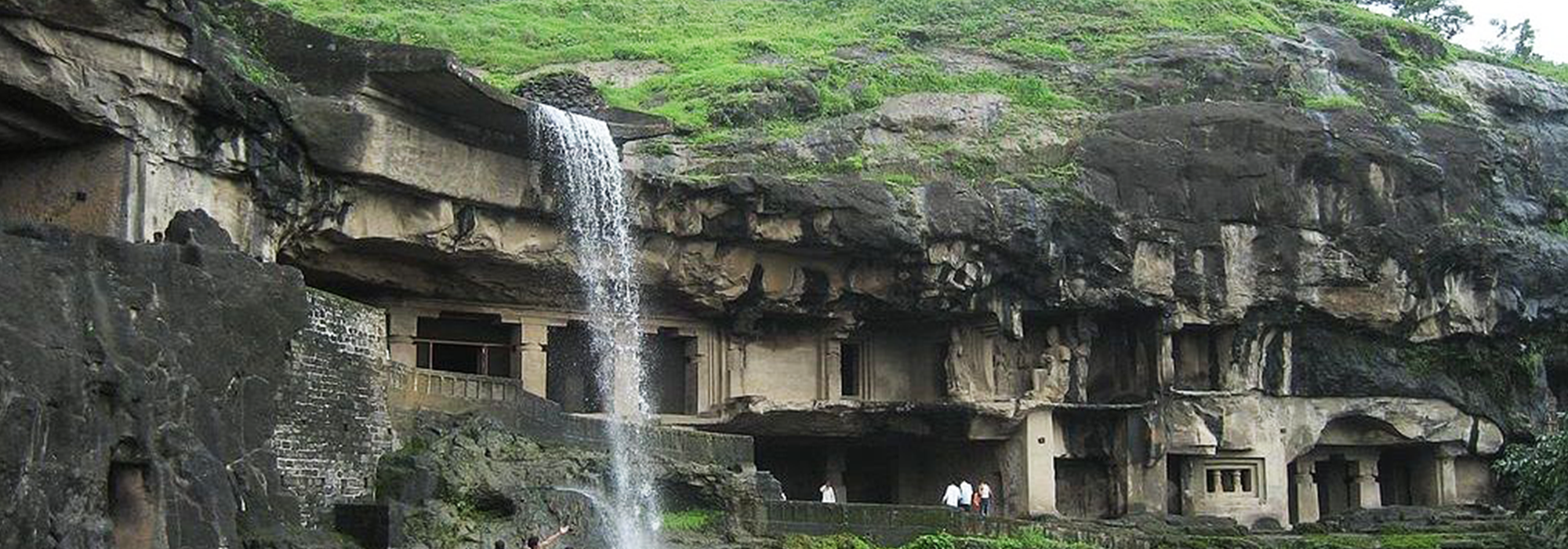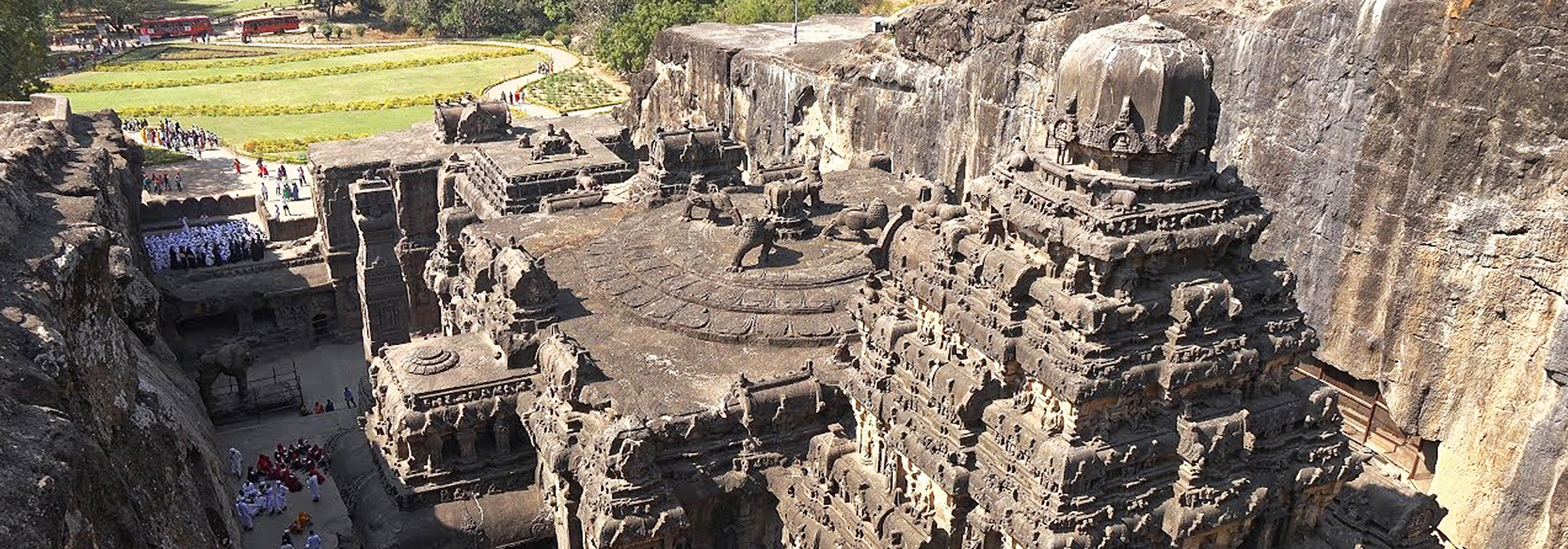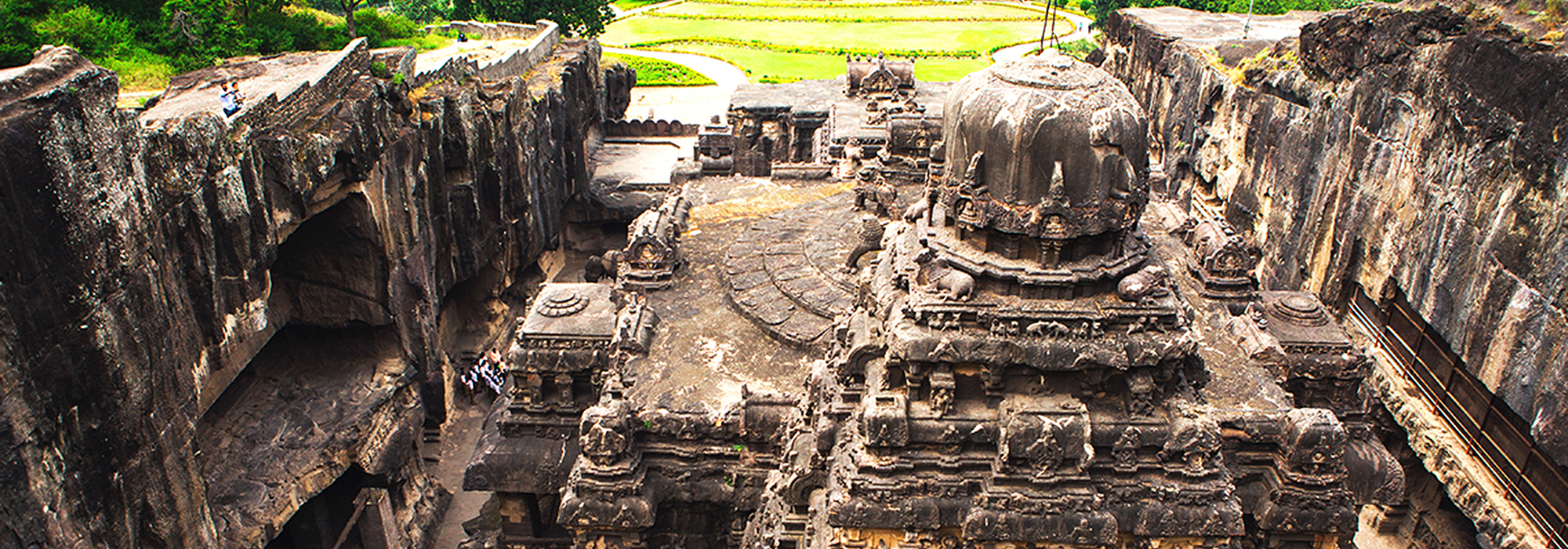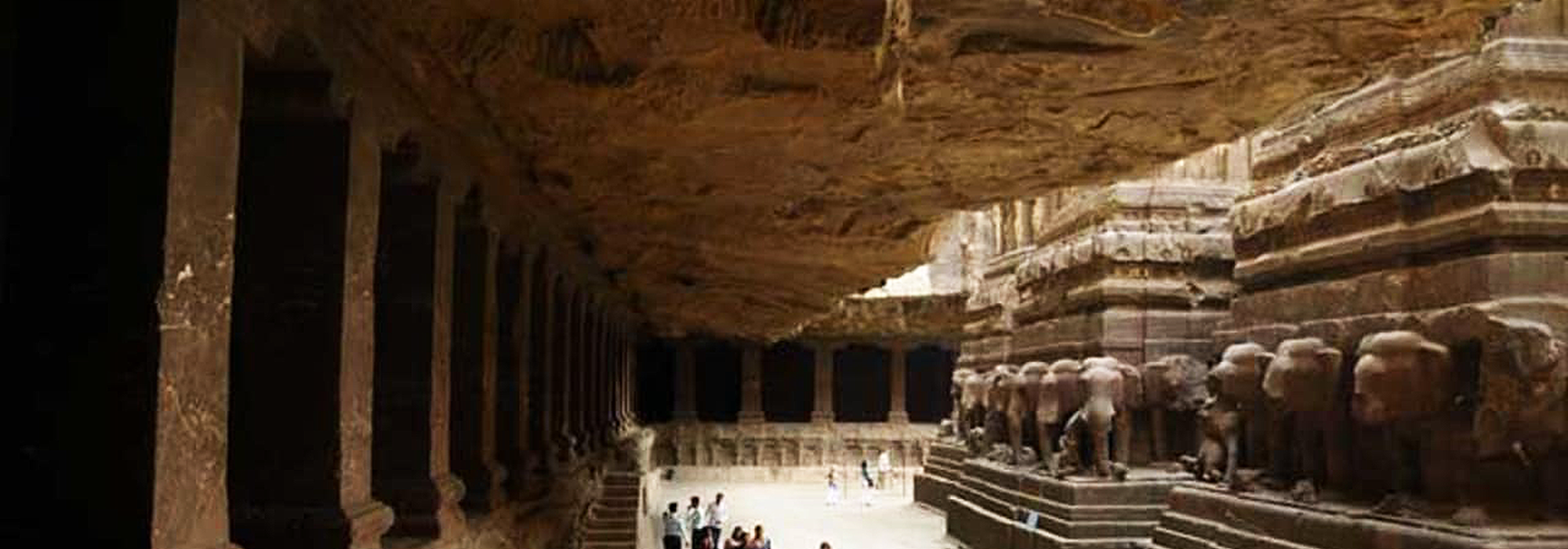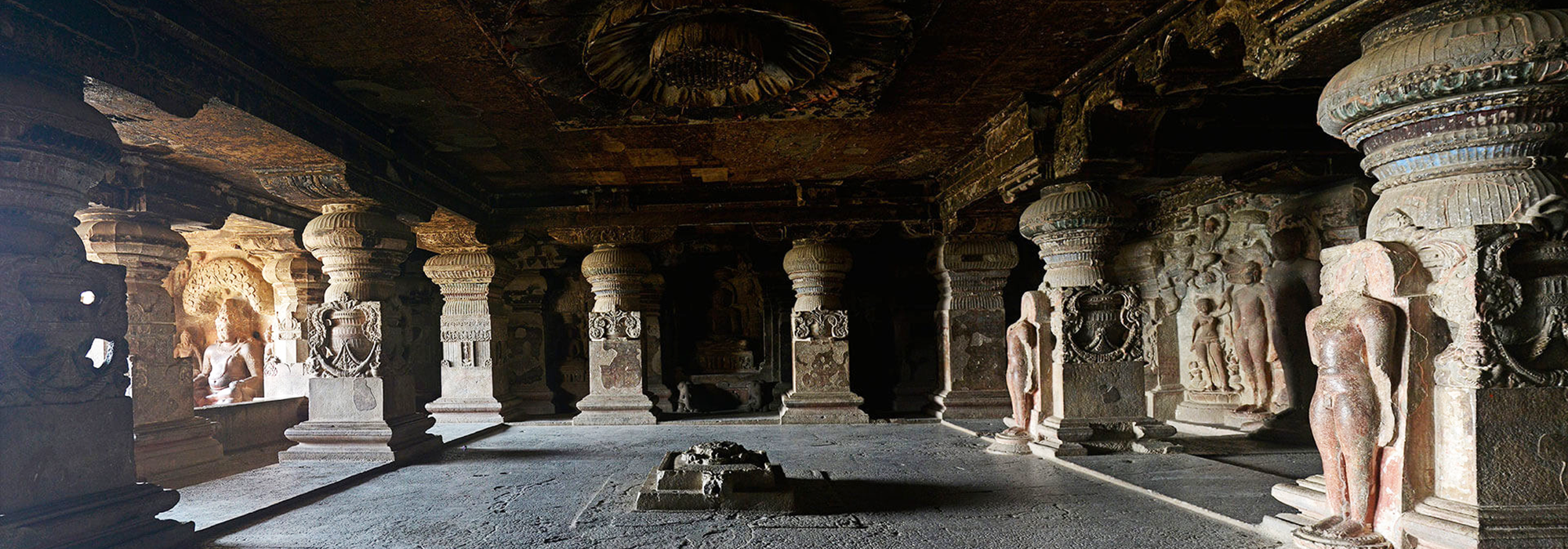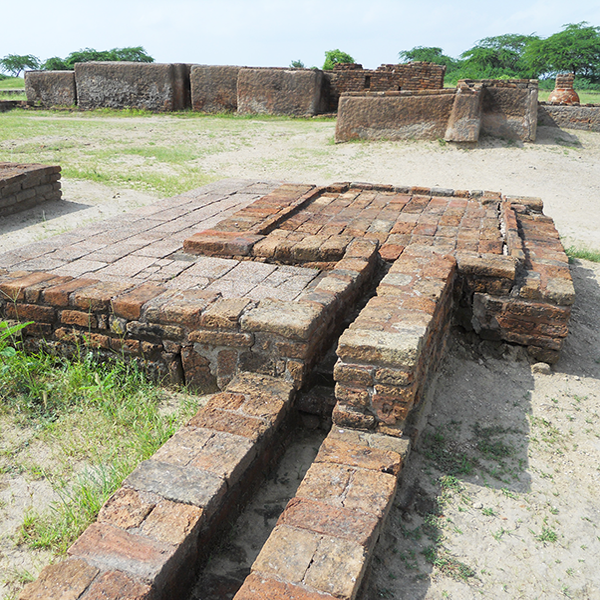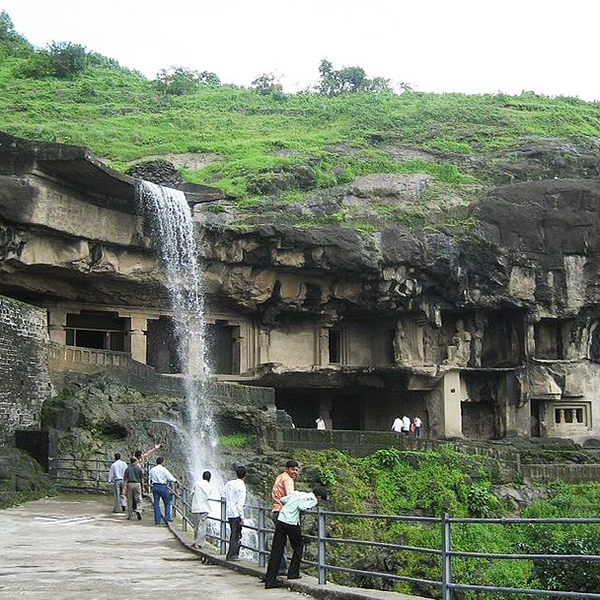The Ellora caves are located in the Aurangabad district of the state of Maharashtra in India. They lie on the Aurangabad-Chalisgaon road, at a distance of 30 km northwest of the district headquarters. The caves have the distinction of being one of the largest rock-cut structures in the world and have been declared a UNESCO World Heritage Site. The caves were excavated between 6th A.D to 11th century A.D. There are more than 100 caves out of which only 34 are open to the public. Out of the 34, caves 1 to 12 are Buddhist, caves 13 to 29 are Brahmanical and caves 30 to 34 are Jain. The existence of caves belonging to three different religions in close proximity of each other indicates a spirit of religious tolerance. The most famous of these is cave number 16, which has the largest single monolithic rock-cut structure in the world, known as the great Kailasa temple.
